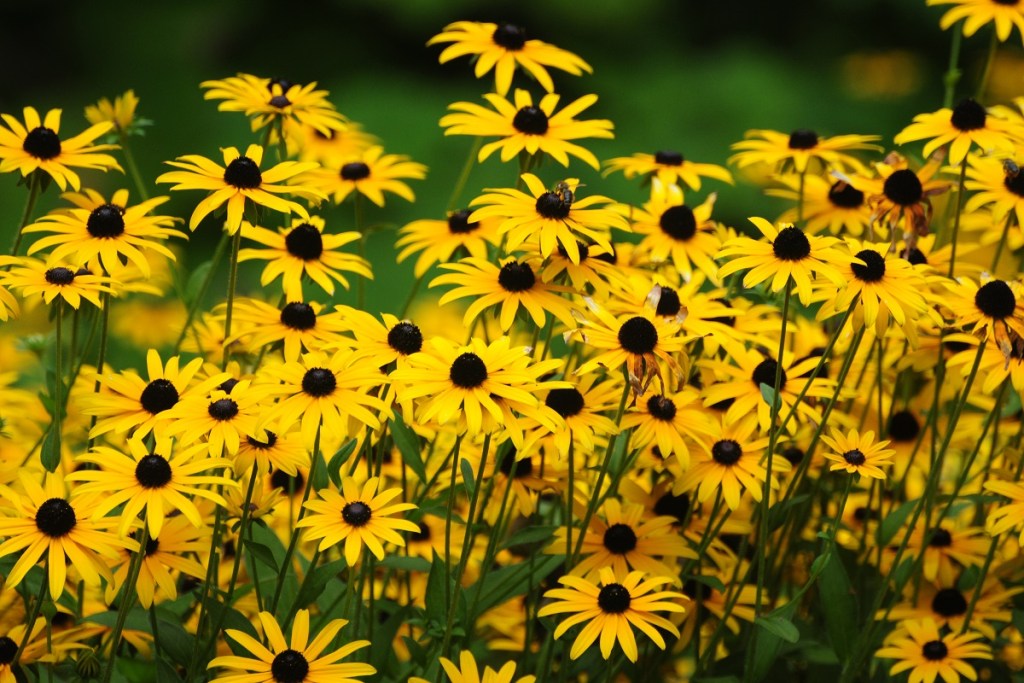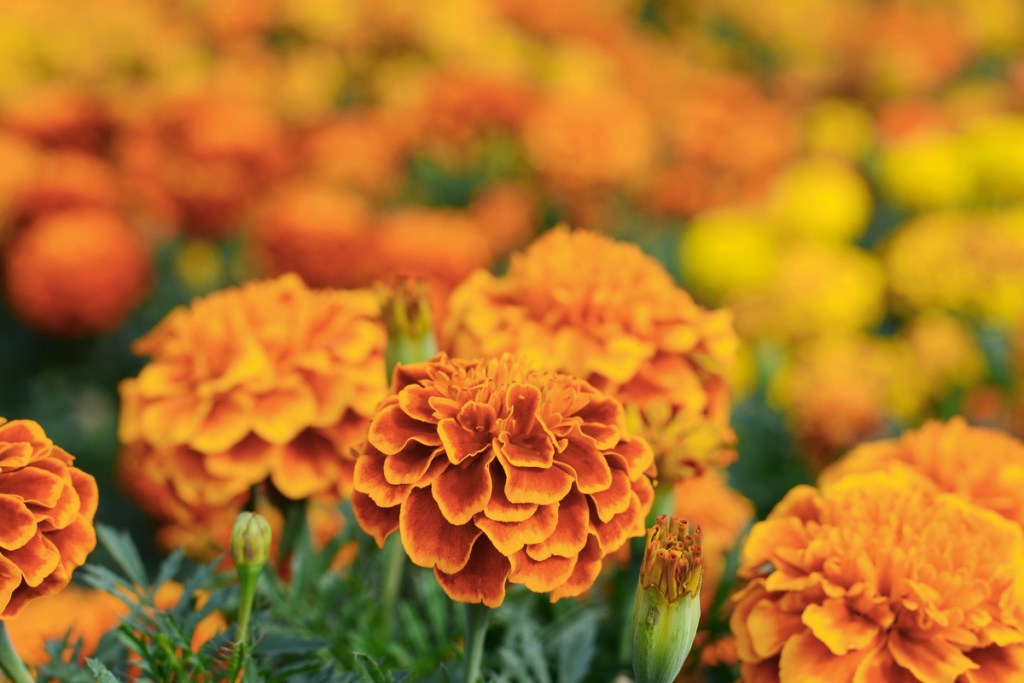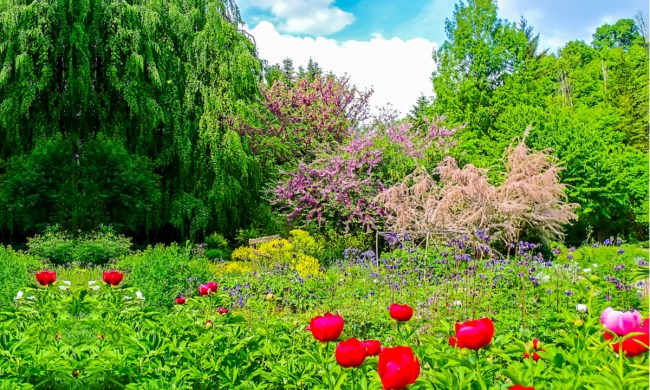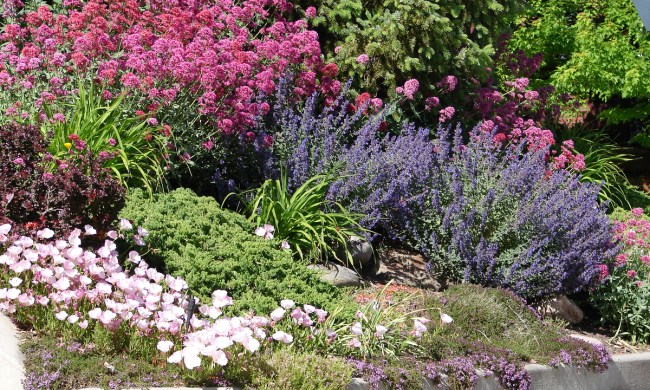When you’re starting a new garden — or looking to spruce up an old one — one of the biggest questions you may have is, “Should I plant perennials or annuals?” Comparing the two isn’t as complex as it might seem, and in preparation for perennial gardening month 2021, we’ve got you covered!

Perennial flowers
Perennial flowers and plants are ones that live for at least three growing seasons when cared for properly. This means you won’t have to worry about replanting them every single year, as they’ll just regrow in the spring/summer after dying back in the fall/winter. Because of this, their energy will mainly go to establishing strong roots that can last from season to season as opposed to focusing on lots of blooms.
Perennials are often planted using seeds or bulbs, which are typically planted in the fall to overwinter before sprouting in the spring. These flowers will have shorter blooming periods, so keep that in mind when designing your garden and choosing your flowers. It would be best to select perennials that bloom at staggered intervals so you’ll have a colorful garden throughout the season.
Examples of perennials
Some examples of perennials include blanket flowers, asters, coneflowers, switchgrass, peonies, black-eyed susans, and stonecrops. When it comes to setting up your garden, you should keep in mind that different perennials will require different care (lighting, water, etc.). Try to arrange like plants together, that way you can minimize the risk of watering too much or too little.
Fortunately, most outdoor plants won’t have water needs that contrast too much since you can’t really control the rain. So you should be wary of how much water they’ll need beyond that, whether they’re drought tolerant, and how you can accommodate their full sun/partial shade needs.
What are the benefits?
There are many experienced gardeners who prefer perennials over annuals, not only for their strong root system but because they maintain their greenery throughout the entire growing season, despite a short bloom time. Because they only spend their first season establishing a solid, deep root system, you’ll be able to see the results of your labor during the second year (so long as you provide them with the best care possible).
Perennials can often save time from year to year, too, as you won’t have to worry about spending time and energy deadheading plants and removing spent ones from your garden at the beginning and end of each season. The perennials’ root systems will even improve the structure of your soil since you won’t have to dig up and replant flowers year after year (meaning water will be able to move through the soil easier).
Are they right for me?
Whether or not perennials are right for you depends on what you’re after. If you don’t have a lot of time to dedicate to gardening, it may make more sense to establish perennials in the first year so you have less to worry about for a few seasons following. If you know exactly what flowers you like and what you’re after, perennials are a good choice because you’ll be able to predict what will regrow and where, and you won’t have to design and lay out the garden from season to season.

Annual flowers
Annuals are essentially the opposite of perennials. They live for only one season, whether they’re planted from seed or an established plant. Annuals sprout, bloom, produce seeds, then die within one growing season. There are annuals that bloom for an entire growing season and some only for a month or so. Although they require replanting year after year, they offer a lot more variety in your garden because you can pick new ones each season.
Because they don’t last as long, annuals aren’t as much of a commitment as perennials (which is perfect if you’re trying out a new garden location) and they can be more affordable, too.
Examples of annuals
Some examples of annuals include begonias, chrysanthemums, cosmos, marigolds, sunflowers, and snapdragons. Similar to the perennials, the care may vary from flower to flower, so be mindful of ones that have similar light and water requirements and try to keep them together when designing your garden. Because most are fairly similar, this shouldn’t hinder the design of your flowerbeds and will mostly focus on what areas are good for partial shade flowers and which ones are good for full sun.
What are the benefits?
Although annuals complete their life cycle in one growing season, some are self-seeding. This means there’s a chance you’ll have new flowers the following season even if you didn’t plant them, so long as some seeds were viable and you didn’t remove them before they hit the ground. This process, however, doesn’t mean they are perennials.
The other benefit is planting new flowers every year without having to dig up roots or bulbs. Annuals aren’t assigned climate zones like perennials since they don’t need to overwinter, which means you’ll have a larger selection from which to choose year after year.
Are they right for me?
Just like perennials, whether you choose annual flowers or not depends on how much time and energy you have to devote to your garden. If you absolutely love the thrill of picking out new plants every season and designing your flowerbeds, annual flowers are a good choice for you. They do require more upkeep and maintenance at the beginning and end of the season, though; so make sure they get established, then clear out any spent plants along the way.
When it comes down to perennials vs. annuals, it’s your call! With perennial gardening month being observed in June, it’s time to think about what works best for you. It might be nice to mix in some perennials you can rely on from year to year with new annuals, introducing a fresh look in your garden each spring. Ultimately, there’s no wrong choice. It’s about what’s best for you, your garden, and your lifestyle.


